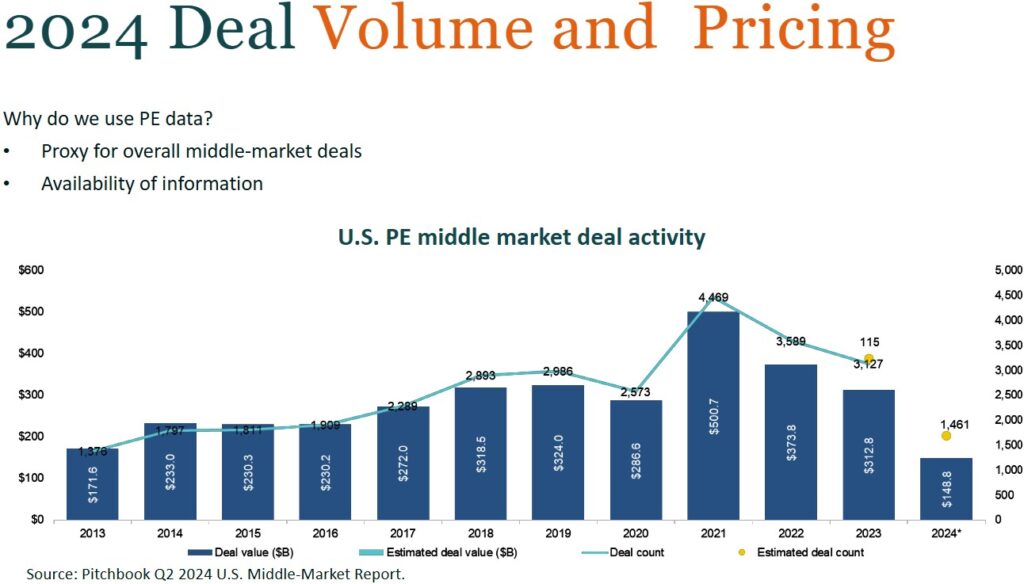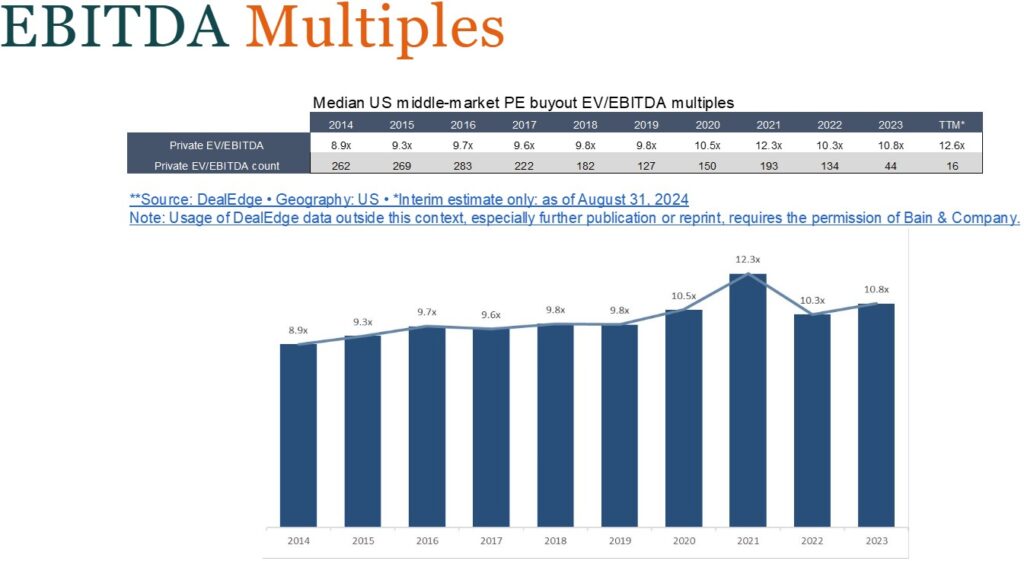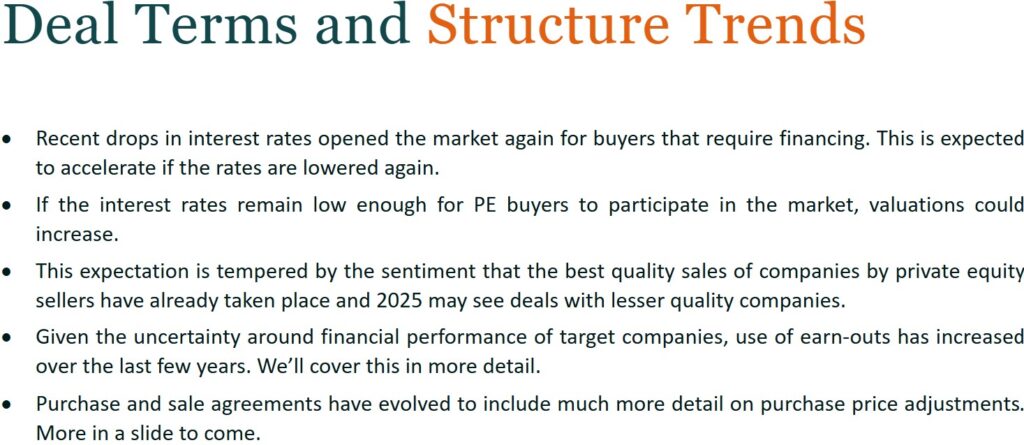The mergers and acquisitions (M&A) landscape is evolving rapidly, shaped by shifts in market dynamics, valuation trends, and industry-specific factors.
For businesses looking to grow or merge, understanding these changes is critical for facilitating more profitable mergers while minimizing risks or future liabilities.
In our webinar, Current Trends in M&A and Growth Financing, we discuss what M&A trends we’ve seen through the end of October 2024. Here’s a look at the current patterns and strategies our Merger & Acquisition advisors have seen to help your business navigate the future M&A market.
New M&A Trends in Deal Volume & Valuation
Through the last quarter of 2024, merger and acquisition activity has shown signs of recovery compared to the same period in 2023.
Deal Volume Growth
Deal volumes, particularly in the middle market, have increased, and valuations are firming up as economic conditions stabilize. Private equity activity has grown by 5% year-over-year, with minority growth deals contributing significantly to this increase.

Valuation Growth
Valuations are also climbing, especially when measured as a multiple of EBITDA. While these multiples are approaching historical highs, revenue multiples have shown a slower recovery, influenced by sector-specific factors. Industries with capital-intensive operations often favor EBITDA multiples, while service-based sectors may rely more on revenue metrics.

Forecasts
However, the market’s future could see mixed signals. As private equity firms broaden their portfolios, the sale of lower-quality assets may temper valuation growth. Meanwhile, a rebound in small-cap public equity valuations could push multiples higher, creating competing pressures.
The Current Role of Private Equity in Middle-Market M&A
Private equity continues to play a dominant role in shaping the middle-market M&A landscape. With substantial "dry powder" (capital ready for investment), private equity firms are poised to drive deal activity further, especially as interest rates trend downward. This shift reduces borrowing costs and makes financing deals more attractive.
Forecasts
Notably, private equity deals often serve as a bellwether for broader market trends. Their increased emphasis on minority growth investments highlights the demand for flexible financing structures in today’s competitive environment.
Newly Evolving M&A Deal Terms & Structure M&A Trends
M&A transactions are becoming increasingly complex, with a heightened focus on deal terms and due diligence processes. As we enter 2025, sellers and buyers alike must navigate:

Earnouts
These agreements continue to be a common tool to bridge valuation gaps, often tied to specific metrics like revenue, gross profit, or EBITDA. Earnouts allow sellers to benefit from post-transaction performance while mitigating risk for buyers.
Working Capital Adjustments
Negotiations around working capital levels — defined in purchase agreements — ensure both parties avoid unexpected financial discrepancies post-deal. Accurate assessments of cyclical working capital needs are critical.
Due Diligence
Extended due diligence periods, now averaging 90-120 days, reflect the rising emphasis on quality assessments. This includes financial due diligence, legal evaluations, and sector-specific considerations like cyber security and talent alignment.
5 Ways to Capitalize on the M&A Trends for Successful Transactions in 2025
Facilitate more profitable, long-lasting mergers with advice from our M&A experts based on these end-of-2024 M&A trends:
- Integration Planning: Seamless integration is key to realizing post-deal synergies. Early planning ensures smooth transitions for employees, systems, and operations. Prioritizing high-value initiatives — even if challenging — can significantly impact overall success.
- Cyber Security Readiness: With cyber risks at an all-time high, ensuring robust security measures during due diligence and integration is non-negotiable. Assessing the target’s systems, processes, and governance can prevent potential vulnerabilities. Learn more about Q4 2024 malware security trends here.
- Talent Evaluation: Aligning teams from both companies is vital for operational continuity and cultural cohesion. Identifying key personnel, addressing compensation disparities, and fostering collaboration between teams can strengthen the combined entity.
- Preparing for the Sale: Sellers should focus on enhancing operational efficiency, financial reporting, and revenue quality to attract higher valuations. Addressing potential red flags, such as litigation or inconsistent accounting practices, can streamline the transaction process.
More Details in Our Current M&A Trends Webinar
As the M&A market trends upward in the last quarter of 2024, businesses must remain agile and well-prepared to seize opportunities. By understanding evolving deal structures, leveraging private equity trends, and prioritizing integration and due diligence, organizations can navigate the complexities of today’s M&A environment effectively.
Whether you’re a buyer or seller, proactive planning and strategic execution will position you for success in this dynamic landscape. Watch the full webinar, Current Trends in M&A and Growth Financing, below.
M&A Transaction Advisory Services with Kreischer Miller
In the new year, we will be seeing new trends for M&A. Our team stays up-to-date on all things in the merger and acquisition financial and compliance space. Explore our M&A Advisory Services or contact us, today, for more information.


